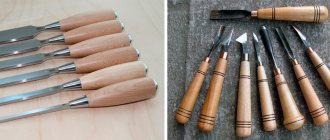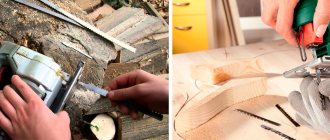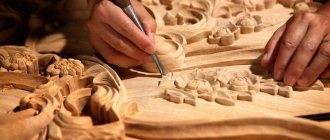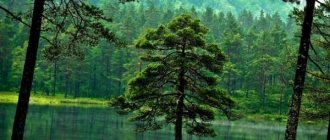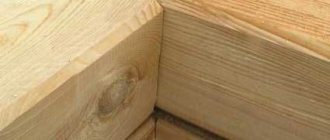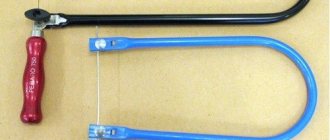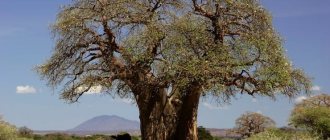In the Nizhny Novgorod region there are many talented craftsmen who follow the traditions of Russian artistic crafts. House carvings have been known here since ancient times. In this region it is also called blind, ship or baroque carving. It originated in the mid-18th – early 19th centuries. Skilled folk craftsmen decorated ships. This type of carving is called blind: there is not a single through hole in the wood.
House wood carving
A large and juicy ornament must be viewed from afar. The elements are combined into a single composition, which is clearly visible from a great distance. Nizhny Novgorod house carvings are characterized by expressiveness and symbolism. It decorates the facades of wooden houses or roof ridges. It can be seen on other buildings.
House carvings of the Nizhny Novgorod region: an excursion into history
In the Nizhny Novgorod district there were many craftsmen who mastered the art of carving. Initially, carved elements decorated merchant and military ships. However, later the wooden carved ornament was transferred to the huts. The ships were built in the winter, and in the summer the carvers needed part-time work. Carved facades made the houses of the residents festive. Therefore, such jewelry quickly became fashionable. The carving elements are ideally suited to the architectural and landscape design.
An example of house carvings from the Nizhny Novgorod region
The ornament is associated with the symbolism of blooming nature:
- animals;
- flowers;
- birds;
- mermaids;
- fabulous monsters.
Each image or pattern had a powerful magical character. For example, the Sirin Bird acted as a harbinger of prosperity and happiness in the home. In the old days, people believed in the power of wooden elements that served as amulets. Carved decorations protected their owners from evil.
Only highly qualified craftsmen could engage in blind carving. They knew the characteristic properties of various tree species. Today, like many years ago, craftsmen who know how to make Nizhny Novgorod carvings are highly valued. Each folk craftsman adds his own details to the pattern, which refreshes the traditional ornament. Previously, craftsmen worked in groups:
Various designs of Nizhny Novgorod carvings
- The art director's task was to draw holes along the contour of future drawings. He did this work with a needle. The drawings made were sprinkled with crushed charcoal, and the outlines were outlined with a pencil.
- The carver selected a suitable background and created the relief.
- The master gave the patterns soft and plastic outlines. He coated the board with drying oil. The final stage was coloring.
Traditions of ancient Russian wood carving
Wood carving is a traditional ancient Russian craft that has become an integral part of Russian culture. The art of wood carving among the Proto-Slavs originated in the times when the first primitive cutting tools appeared. The Slavic peoples had to put in a lot of work to clear the territory completely covered with dense forest for arable land and for building a house. For thousands of years in Rus', wood was the main material for the construction of residential buildings, roads, fences, household utensils, tools and weaving from birch bark or willow vines. The art of wood carving, as well as ancient Russian embroidery , reflected the pagan ideas of the people about the Universe.
In pagan Russia, people worshiped the rising and setting Sun , the formidable elements of nature, and deified the Nature of the Earth as a whole. In wood carving, in ancient times, symbolic images of the Sun, Sky, Earth, Man, Water or heavenly Rain appeared, fertilizing the earth and giving fertility to people.
The sun was depicted as a circle divided by straight or wavy rays into six segments, which was called the Perun sign. The Thunderer Perun is the supreme deity of the ancient Russian pagan pantheon of gods. The Perun sign was used to decorate houses where thunderstorms were especially frequent - in order to “divert” lightning from striking the building and avoiding a fire.
Many believe that the sign of Perun was placed on houses where soldiers lived - after all, this god was considered the patron of the squad of Grand Duke Vladimir, the military brotherhood, and princes.
Perun’s color can look like a complex broken cross, reminiscent of a swastika, rotating in the direction of the sun - “salting” or against the sun - “anti-salting”. The swastika, as a solar sign, was used in all ancient cultures, and was considered to indicate the movement of the sun towards winter or summer.
The sign of the Sun was used to decorate the roof of a house, since the roof and everything above the ceiling symbolized the sky; it was located where the slopes met, below the ridge. This was the traditional place to place the solar symbol, which gave the house warmth and protection to all household members.
The prichelins were “heavenly abysses”, the place of their connection was the “top of the sky”.
The horses in the carving are symbols of the sun , because, according to legend, it was they who carried the Sun across the sky from east to west and returned the night sun at sunrise in the morning .
The sun in the Vedas is called a runner, a fleet-footed horse ; there is a whole hymn addressed to him as to a heavenly horse.
The sun rides across the vault of heaven on winged, fiery-breathing horses; it quickly hurries after Dawn and by evening descends into the quiet waters of the ocean .
about Sivka-burka that this horse grazes in the ever-blooming steppes of the heavenly pasture. Heroic horses carry living and healing water with them and, with the blow of their hooves, knock out underground springs , that is, the rain springs of Elijah the Prophet , to whom popular superstition transferred the ancient cult of Perun .
Paired images of birds - swans, swallows, ducks spoke of mutual love, a strong marriage , their images were wishes for harmony in the family.
German and Slavic tribes attribute the bringing down of heavenly flames to the stork, because of its red legs, and to the woodpecker, because of its fire-red crest . The Slavs believe that the house on which the stork builds its nest is safe from a thunderclap. On whose thatched roof the stork (blacknose) builds its nest, that owner will have good luck in everything.
On the upper part of the platbands, under the piers, there were birds or winged mythological creatures Sirin and Alkonost.
Among all the peoples of the Aryan tribe, the bird had a generally understandable poetic image of wind, clouds, lightning and sunlight. The eagle and falcon were considered incarnations of the thunder god Perun and later the thunder god Elijah the prophet, so the feathers of birds in wooden carvings were decorated with signs of Perun.
The lower edge of the piers was formed by wavy or jagged lines. This is the traditional symbolism of water, including “heavenly water,” that is, rain. Where the piers meet, there is a “towel” with a solar or thunder sign.
Traditional signs of the earth in wood carving , as in traditional ancient Russian embroidery, were depicted in the form of a rhombus elongated vertically, or a square divided into four parts with dots - this is a symbol of a field sown with grain, that is, a symbol of fertility. The dots in this case are a symbol of the seed, the comma means the germinating seed. In ancient Russian embroidery, a rhombus with dots was a symbol of a fetus, a pregnant woman. In general, the symbol of the fertility of the earth and people, the spring rebirth of life, the development of seeds and fruits, was used in house carvings on trim, frontal and dividing boards, and in door decoration. However, even more often it was carved on household items - spinning wheels and in embroidery on ritual wedding towels and clothing.
Stylized images of a woman - with raised arms , with horns, on a horse, were carved in the upper part of the casing in the form of the world tree of life . This is the symbolism of the goddess Mokosh - the mother of all living things, ancestor, giver of life's blessings, patroness of women.
The Tree of Life , as a talisman, was depicted on window frames, entrance doors, on gates, on household utensils - spinning wheels, looms, wooden utensils, in embroidered ritual towels and on clothes, calling the patronage of the goddess of the Mother of God and life for the whole house.
The world tree could actually look like a tree or be stylized almost beyond recognition.
Modern people who want to decorate their home with wooden carvings in Slavic traditions and consciously use ancient signs adopted in carving and painting can be recommended:
To design roof overhangs, piers, and valances, it is worth taking wavy or weakly relief contours, reminiscent of a wave . These will be “heavenly abysses”, a symbol of water and rain. If we take the sacred meaning, the symbols should protect the roof from leaks and at the same time liken it to the sky.
organically fit into the junctions of the piers (under the ridge), at the ends of the piers, on the frontal board and the pediment . A cross enclosed in a circle or a multi-pointed star with straight or curved rays.
Platbands, window sills, window frames, and doorways can be decorated with symbols of fertility . A rhombus with a recessed middle or rhombuses formed by the intersection of straight lines, complementing it with elements of floral patterns .
On household items, children's furniture (cradles, cribs), women's utensils, the sign of Mokosh or Rozhanits, as well as symbols of fertility and the Sun, would be appropriate.
Terms of consanguinity. GRANDSON
Phanagorea - "light burning on the mountain"
Carved symbols of bygone times
Of great interest are the ancient Russian huts that are found in villages. Many works are over 100 years old. Platbands and shutters are real “wooden splendor”. There are no carved houses that are similar to each other. On the shutters of one hut there are two scrolls in the form of spirals. They gradually turn into stems. And they are crowned with the heads of fabulous birds. The shutters of another residential building are decorated with iconostasis motifs with rich floral patterns.
The mermaid was associated with the coastline. It is this image that protects many buildings and their owners. On the pediments, carvers often sawed out the owner's name and the year of construction. Those patterns that are present on the platbands are not difficult to detect in folk embroidery.
Magic spells are forever imprinted in the works of Russian craftswomen. The cut-out ornament appeared later.
Vladimirskaya
“Vladimir Patterns” is a factory founded in 1971. This is the most interesting painting from the point of view that it became a separate direction half a century ago. This is a brand of souvenir products from the Vladimir region. There are a lot of works here on a light, unpainted background, which perfectly conveys the natural beauty of the wood structure. And in a modern interior such works will “get along” more easily.
Vladimir painting
The Vladimir craft is distinguished by a unique tamponing technique, which makes it possible to create volume on an existing drawing, convey the full color and depth of the colors used. The first masters were inspired by the bright works of Mstera embroidery. Preferred colors are beige, green, black, red. The Vladimir craft is rich in berry ornaments: there are rowan berries, raspberries, barberries, and gooseberries.
How to master the art of Nizhny Novgorod master carvers
Beginners should always remember the features of house carvings typical of the Nizhny Novgorod region:
- non-cut background;
- the pattern is flush with the wood material.
Various geometric shapes are widely used here: circles, triangles, quadrangles and others. Blind carving allows the carver to experiment on wooden walls and create large-scale images. Any fantasies can be realized. Today, carved paintings are created in different styles.
It is recommended that a novice craftsman first try to fashion the desired ornament from clay or plasticine. This training exercise helps develop the right sense of scale.
Carved ornament option for home decoration
After such practical training, the beginner will gain confidence, which will help him work with wood. You can start cutting out facades once the necessary skills have been acquired. Make household items that will definitely be useful around the house. Craftsmen who want to make complex or multi-layer platbands use stencils.
Ural-Siberian
One of the types of free brush painting on wood with oil paints is Ural-Siberian painting . It is distinguished by a special technique - whitening, when colored paint is taken onto the edges of a flat brush in one grip with white paint.
Features of the fishery:
- a small number of flowers - only one for all the greens, only one for all the flowers, the colors usually contrast with the background;
- traditionally they painted painted wood;
- the markings were made with fingers without a sketch, the location of future leaves and buds was imprinted with spots of the main colors;
- thanks to the two-color brushstroke, a soft transition from color to color was created;
- The painting was completed with graphic black notes so that all elements of the composition were connected with the background.
This painting is especially attractive in the interior and exterior of houses - there its conciseness, composure, and clarity in the choice of colors are revealed to the maximum. And even in a modern interior it can become an interesting accent. You can start by decorating a white tray with Ural-Siberian motifs, and continue, for example, with a painted bookshelf.
We present to your attention a film about Ural painting and the artist Nadezhda Elkina.
The first patterns of a beginning carver
You cannot start carving wooden products without becoming familiar with its technique. Start by making geometric patterns. Practice drawing straight lines, triangular indentations, squares, and individual flower and leaf details on the surface of the tree.
To train, you need a blank with dimensions: 20x70x200 mm. It is planed on both sides to prepare the surfaces for carving.
First familiarize yourself with the technique of how to work with a joint knife. Hold the instrument correctly - with the heel facing towards you. The cutter should be grasped by the handle and blade of the cutting part.
Wood cutting knife set
The blade should protrude only 30 or 40 mm from under your fingers. To avoid cutting yourself, wrap the part of the blade you hold in your hand while working with electrical tape. The joint is led towards itself. The knife must be vertical relative to the workpiece.
Mezenskaya
Mezen artistic painting on wood originated in the village of Palashchelye, on the banks of the Mezen. By the way, if you hear that Mezen painting is called Palashchelsky, do not rush to blame your interlocutor for a mistake - this is an alternative name.
Cheat sheet for students - Mezen painting on bast and wood:
- The heyday of the fishery occurred in the 19th century. The secrets of creativity were passed down through the male line. The main purpose of the craft is to improve peasant life.
- The main characters of the colorful painting are deer and horses. The basic colors used to depict them are black and red. The dark color was obtained by mixing soot and a solution of larch resin. Red came from clay (and then from red lead).
- The Mezen master applied the ornament onto unprimed wood with the feathers of black grouse or wood grouse. Could use a wooden stick or a hair brush.
- The pattern represented a whole narrative, which encrypted a message or wish for loved ones. For example, red horses - the sun, geese and swans - the souls of deceased relatives, spruce trees were associated with male power, and deer were considered heavenly mothers in labor who give life to all living things.
- A favorite painted product is a spinning wheel. Boxes and bread bins were also decorated, and this product was actively sold to neighboring villages.
- The exact origins of the painting could not be established. For example, art history specialist S. Zhegalova connects Mezen painting with rock paintings in Zaonezhye. Mezen masters have a lot in common with the patterns of the North, Indikita and Central Asia.
- Today, the Mezen fishery has become the main goal. If you also want to try your hand at this craft, then you can use ordinary squirrel brushes and gouache paints (later you can move on to acrylic). The first “experience” product can be a wooden cutting board; it is perfect for beginners.
Making a template
Ready-made templates are used to make platbands. They can be found freely available on the Internet. You can make the template yourself if you can’t find the option you need:
- We select a suitable drawing;
- We transfer the contours of the pattern onto tracing paper. To do this, use a ballpoint pen or a soft pencil;
- If you need to enlarge or reduce the picture, use the grid. We transfer the contours onto tracing paper. We divide the image field into squares and number each one. On a cardboard sheet or thick paper there should be the same number of squares with larger or smaller sizes. The selected image must be redrawn into a new grid;
- Using carbon paper, transfer the drawing onto a wooden blank.
The template can also be made from plywood.
Preparing for work
Carpentry requires not only competent preparation of tools and materials, but also compliance with safety precautions. The protection of the health and life of the master depends on it. Safety rules for carpentry are as follows:
- All work is carried out indoors with good ventilation or outdoors.
- A mandatory requirement is protective gloves, a respirator and goggles. When working with a tool, the organs of vision and breathing must be protected from foreign bodies.
- It is advisable to carry out all work during daylight hours or in good lighting.
Tools and materials are prepared in advance. The main equipment includes a router or jigsaw with a set of files, a hand or electric drill, and a set of sandpaper of different grain sizes. Wood carving is done using varnish, brushes of different thicknesses and shapes, and a set of wood paints.
